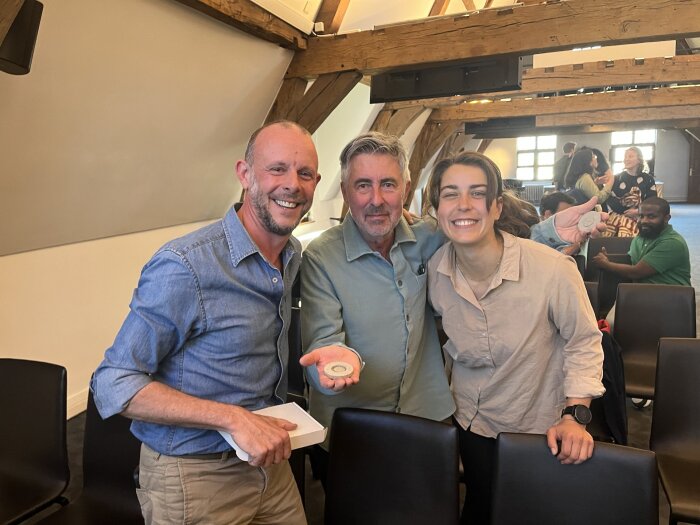Fanarenana Rehabilitation Centre Madagascar Partnership
Since 2015, the University of Antwerp has partnered with the Fanarenana Rehabilitation Centre in Antananarivo, Madagascar, through the non-profit Joella’s Smile. This collaboration supports children with disabilities facing poverty, stigma, and limited healthcare access.
It began when Belgian visitors met a young girl, Joella, who needed surgery for a clubfoot. Unable to afford the procedure, her family received help from the future founders of Joella’s Smile. The experience led to ongoing support for Fanarenana, a centre offering therapy, education, and parental training for disadvantaged children.
Since 2017, students from the University of Antwerp’s Rehabilitation Sciences programme have completed internships at Fanarenana, sharing knowledge and gaining valuable experience. At the Faculty of Design Sciences, master’s students work on developing affordable, eco-friendly orthopaedic devices tailored to local needs. These devices are tested with Fanarenana’s patients and designed using sustainable, locally sourced materials.
The 2023–2024 master’s thesis by Laura Hauspie focused on a low-cost, adjustable night ankle-foot orthosis (AFO) for children with spastic cerebral palsy. The device improves mobility and comfort, and can be reused by another child after two years. Local production, including by people with disabilities, not only ensures cost-effectiveness and sustainability but also empowers the community.
This long-standing partnership strengthens care for Malagasy children and fosters global engagement among students and therapists. By emphasizing context-appropriate, collaborative solutions, it’s helping build a more inclusive, sustainable future.
About Joella’s Smile
Joella’s Smile is a Belgian non-profit founded in 2015, inspired by a visit to Fanarenana, a rehabilitation centre for children with disabilities in Antananarivo, Madagascar. The organisation is named after Joella, a six-year-old girl who needed surgery for clubfoot. Her story moved us deeply and led to the creation of Joella’s Smile, supporting Fanarenana and its mission of inclusive care.
We work closely with Malagasy partners and Belgian universities to support sustainable, context-appropriate rehabilitation. Since 2017, we’ve organised student internships in cooperation with the Faculty of Medicine and Health Sciences (UAntwerpen). These annual internships allow future physiotherapists to exchange knowledge and contribute directly to care on the ground.
Through a partnership with the Faculty of Design Sciences, Product Development students also contribute to improving orthotic care. Projects such as TOTO, an eco-conscious Ankle Foot Orthosis (AFO) made from locally available materials, and Tsikelikely, a reusable night AFO, are co-developed with Malagasy partners and adapted to local production.
In recent years, we’ve expanded our mission to explore local manufacturing opportunities for orthotic devices—working toward long-term independence and empowerment for the Fanarenana community.
Our team consists of Lucette De Ridder, Pieter Tieleman, Liliane De Ridder, Georges Janssens, Sonja Permentier, and their children Elke, Anna, Inez, and Seth, along with a growing network of students, educators, and volunteers who believe in accessible care for every child.
Together, we believe small steps can bring lasting change.
Projects
At Joella’s Smile, we support sustainable rehabilitation projects that empower children with disabilities in Madagascar and strengthen local expertise. In close cooperation with universities in Belgium and our partner centre Fanarenana in Antananarivo, we co-develop practical solutions adapted to local realities.
TOTO, Sustainable AFO for Madagascar
Launched in 2017
TOTO is an Ankle Foot Orthosis (AFO) designed specifically for children in Madagascar. The goal: create a supportive brace made with local, affordable, and ecological materials, that can be produced by local craftsmen.
Initiated by Product Development student Mattis Hoenderboom, under the guidance of Prof. Kristof Vaes and Pieter Tieleman, the first prototype was built and tested at Fanarenana. The project won the Pars Pro Toto Juvenile Design Award in 2019 and has since evolved through master’s theses, biomechanical testing, and collaborative development with students and professionals in both Belgium and Madagascar.
In 2023, the TOTO AFO was successfully tested at the HEDER gait lab in Antwerp and is now in use in Madagascar with the help of student interns and local therapists.
Tsikelikely, Adjustable Night AFO
Launched in 2023
Tsikelikely, meaning "step by step", is a low-cost, reusable night brace designed to improve mobility and sleep comfort for children with spastic cerebral palsy. Created by master’s student Laura Hauspie, this AFO can be adjusted as a child grows and passed on to another user, making it both economical and sustainable.
The design was developed with input from local partners and tested in collaboration with Belgian physiotherapist Iris Maselis and students from UGent, with support from an Erasmus+ scholarship.
Current follow-up projects focus on local production workshops, possibly involving ex-patients of Fanarenana, to ensure repair, maintenance, and meaningful employment.
Paul Panda Farnana Artwork 2024-2025

Artist: Irma Földényi
Title: 'Voices of Materials'
Year: 2023-2027
Material: The artwork is made of sand, solidified using fish glue, an ancient, bio-based adhesive derived from fish bones. This technique allows the piece to dissolve in warm water and be reformed without any chemical reactions. The sand can return to its original state and be reused endlessly, highlighting a sustainable, cyclical approach to material use.
-
 Winners of the Paul Panda Farnana prize
Winners of the Paul Panda Farnana prize